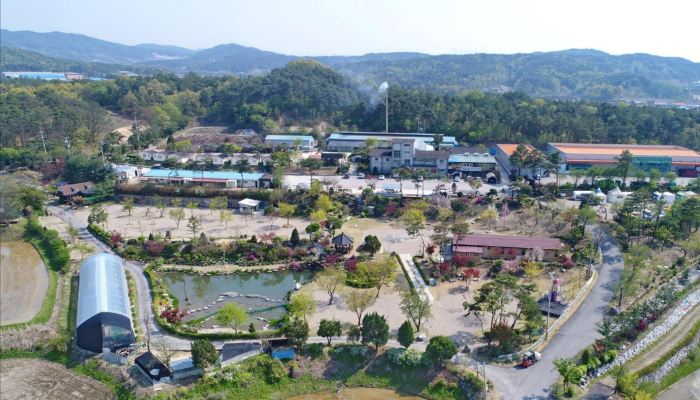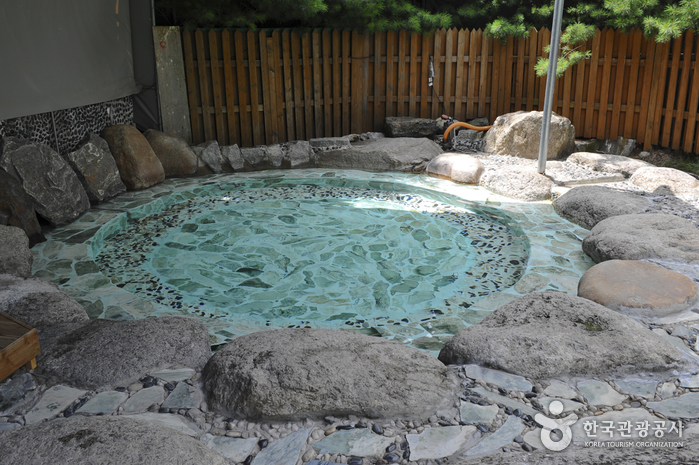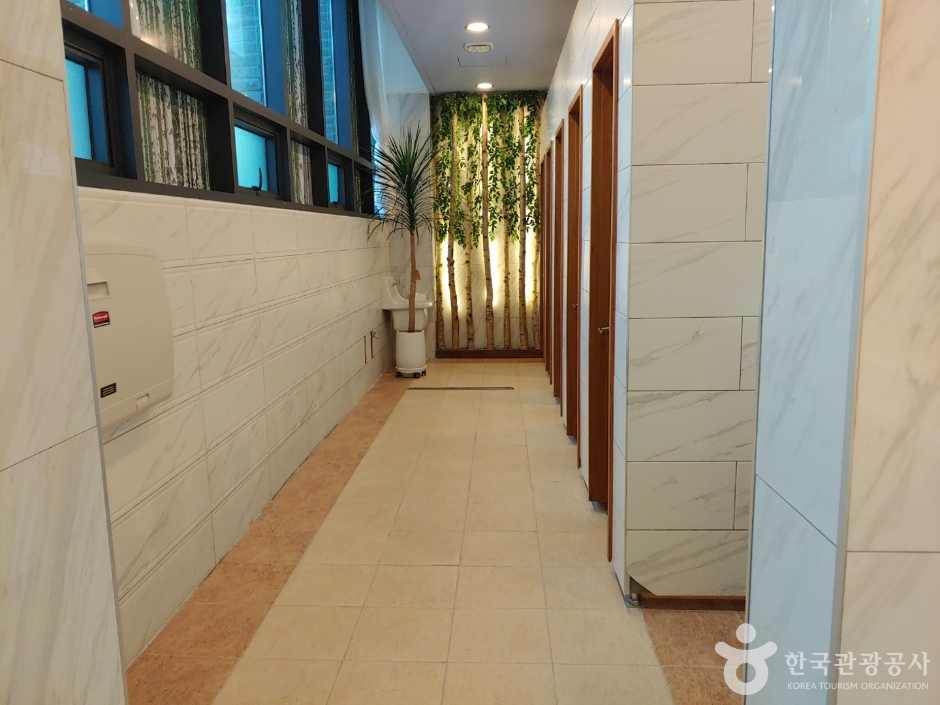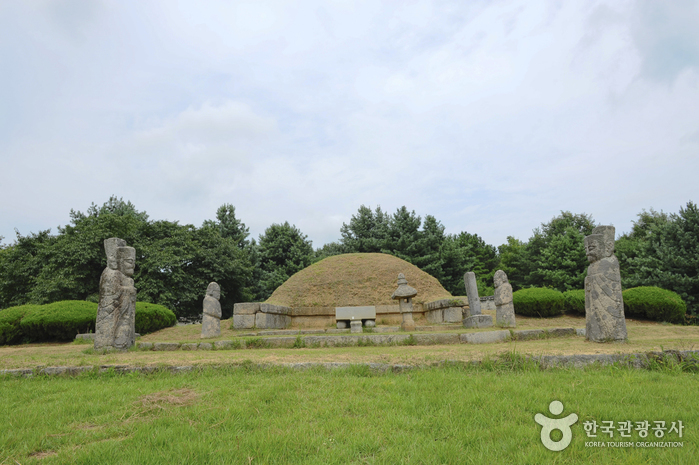Yeoju Charcoal Village (여주참숯마을)
2024-02-23
40 Geolchondong-gil, Gangcheon-myeon, Yeoju-si, Gyeonggi-do
Yeoju Charcoal Village is a multifaceted leisure facility featuring charcoal saunas, an auto campground, and pensions. The charcoal saunas have gained such popularity that an auto campground was established nearby. These saunas comprise ten red clay rooms, which are heated by burning oak wood for five days. After the charcoal is removed, visitors can enjoy the residual heat for steaming in the sauna rooms. For accommodation, there are fourteen pension buildings and a campground segmented into six zones, totaling 120 sites.
Changwon Rose Garden (창원 장미공원)
2024-02-07
31 Gaeum-dong, Seongsan-gu, Changwon-si, Gyeongsangnam-do
This garden, situated in the heart of Seongsan-gu, Changwon, boasts 23,000 roses representing 98 species from around the world. At its peak in May but blooming late spring to early summer, it becomes a magnet not only for Changwon locals but also for travelers with a penchant for plants. With rose tunnels and benches scattered throughout, it's an ideal spot for a leisurely walk.
Yeoju Spa (여주온천)
2025-06-25
864 Gangmun-ro, Gangcheon-myeon, Yeoju-si, Gyeonggi-do
At Yeoju Spa, the hot spring water emerges from 800 meters below the bedrock, rich in various minerals beneficial for neuralgia, arthritis, and skincare. The water, also drinkable, aids in alleviating digestive issues. The open-air bath's floor is lined with natural jade, offering a pressure point massage for bare feet. Visitors can simultaneously indulge in a forest bath and a hot spring bath, enjoying a holistic wellness experience.
Ludensia (루덴시아)
2025-07-01
177 Geumpum 1-ro, Sanbuk-myeon, Yeoju-si, Gyeonggi-do
Ludensia is a European-style theme park constructed using 1.6 million bricks, among which are vintage bricks directly imported from Europe. The park houses various galleries, studios, and a café. Notable attractions include the Train Gallery, boasting over 1,000 model trains; the Antique Gallery, home to a 700-year-old wooden Jesus statue; the Analog Studio, featuring classic albums such as The Beatles' "Yesterday and Today (1966)"; and the Tram Studio, showcasing miniature trams.
Tomb of Hwang Hui (황희정승묘)
2024-02-07
23-83 Jeongseung-ro 88beon-gil, Tanhyeon-myeon, Paju-si, Gyeonggi-do
Hwang Hui (1363-1452) is a prime minister who played a significant role in the early Joseon dynasty. Constructed in three stages, the tomb's burial mound is notably large. Hwang Hui was an official instrumental in establishing the foundations of Joseon. He served under King Taejong, the 3rd king of Joseon, and King Sejong, the 4th king, making notable contributions in diplomacy, law, science, and national defense. His descendants have continued to honor his legacy by maintaining the tomb.
Yeoju Hwangpo Sailboat (여주 황포돛배)
2024-02-23
Cheonsong-dong, Yeoju-si, Gyeonggi-do
The Yeoju Hwangpo Sailboat, historically utilized for transporting goods in the Joseon period and propelled by the wind, has been recreated on the Namhangang River. It operates from the riverside recreation area to Silleuksa Temple, making the round trip seven times daily.
Bangujeong Pavilion and Historic Site of Hwang Hui (반구정과 황희선생유적지)
2024-02-07
3 Bangujeong-ro 85beon-gil, Munsan-eup, Paju-si, Gyeonggi-do
Bangujeong is a pavilion situated in the lower reaches of the Imjingang River. It's where Hwang Hui (1363-1452), a civil servant from the late Goryeo and early Joseon dynasties, spent his later years after resigning from his position as Yeonguijeong, the highest-ranking official in the Joseon dynasty. This historic site dedicated to Hwang Hui includes a shrine erected in his memory and the Gyeongmojae Shrine, which houses details about his accomplishments.
Freshwater Fish Ecology Center (양평 민물고기 생태학습관)
2024-02-07
23-2 Sanggwang-gil, Yongmun-myeon, Yangpyeong-gun, Gyeonggi-do
The Freshwater Fish Ecology Center is a venue dedicated to the observation of the ecological life of diverse freshwater fish. The center offers many educational facilities, including a Freshwater Fish Aquarium, a Freshwater Fish Experience Playground, a Video Learning Center, an Ecology Pond, and more. It exhibits 1,200 freshwater fish of sixty different species. Visitors have the opportunity to encounter native Korean freshwater fish, such as Sturgeon, Korean Torrent Catfish, Bitterling, Korean Rose Bitterling, and more.
Bijindo Beach (비진도해수욕장)
2024-02-28
523-3 Bijin-ri, Hansan-myeon, Tongyeong-si, Gyeongsangnam-do
Bijindo Beach is a unique coastal area with the sea on both sides. One side features a sandy white beach, while the other side offers a small pebble beach. The beach boasts a spectacular view of both sunrise and sunset. Additionally, it is a habitat for the natural monument paperplant (Fatsia japonica).
Jangsado Island (장사도)
2024-02-28
95 Jangsado-gil, Hansan-myeon, Tongyeong-si, Gyeongsangnam-do
Jangsado Island is located in Hansan-myeon, Tongyeong, about a kilometer west of the southern tip of Geojedo Island. It is home to Jangsado Sea Park that features twenty themed gardens, including a Camellia Tunnel Trail, a Maze Garden, and a Herb Garden. The park also has various amenities like an Outdoor Stage and an Outdoor Gallery. From observatories scattered throughout the park, visitors can enjoy panoramic views of the Namhae Sea. Jangsado Sea Park, also known as Camellia, is just a ten-minute boat ride from Geunpo Port in Geoje.





 English
English
 한국어
한국어 日本語
日本語 中文(简体)
中文(简体) Deutsch
Deutsch Français
Français Español
Español Русский
Русский